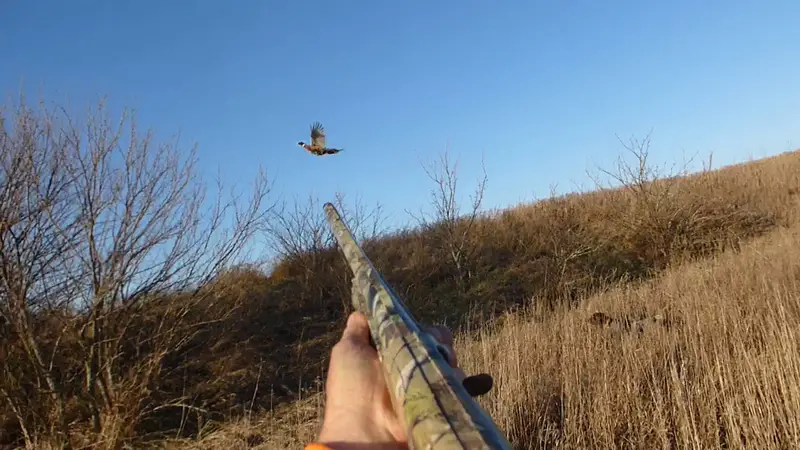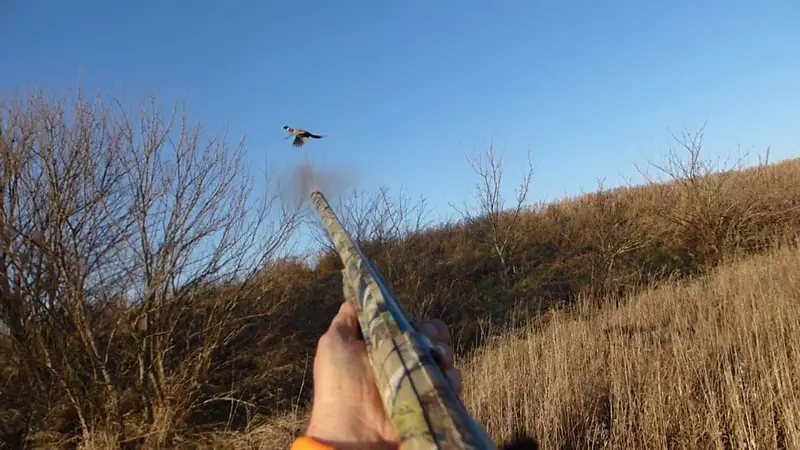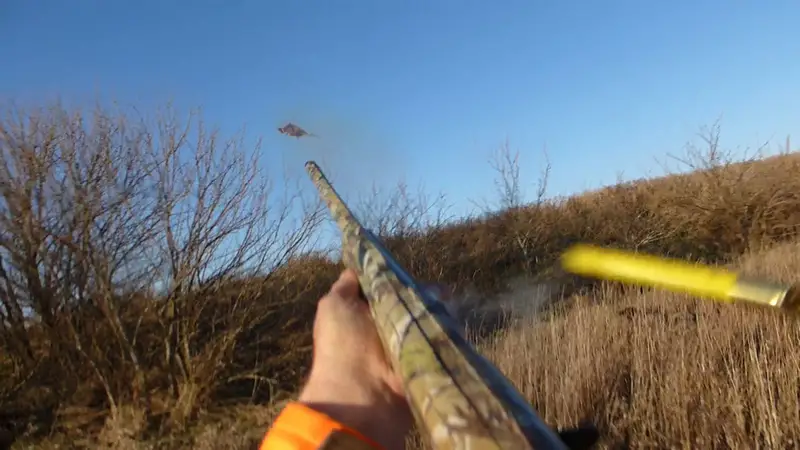


Looking For a Great Pheasant or Upland Gun?
Wild pheasant hunting is easier to touch upon than “upland,” for the most common upland game animal at one time was the rabbit. Upland hunting can be most anything that isn't waterfowl, for even turkey is considered an upland bird. Doves are the most harvested game bird in the U.S., at an annual bag of 20 million birds or so. Hunters have no impact on game populations except to fund them and grow them. As reported in USA Today in January, 2013, cats kill up to 3.7 billion birds every year in the U.S. Unlike hunters, cats naturally fund no habitat, buy no licenses, follow no seasons, and respect no bag limits.
Here in northern Illinois, the truly smart roosters don't get fired at. They'd much rather run than fly, and the click of a car door can send them running a couple of hundred yards away. Smart, nervous roosters also have no problem hitting the air 150 yards in front of you if things are slightly unnatural to them. Fortunately, not all roosters are spectacularly brilliant. Hunters do nothing to stress pheasant populations here, as hens are not hunted. But the hawks aren't choosy and they hunt from the air year-round.
Pheasants can hit 60 mph for short distances and when combined with 20 – 30 mph winds, it is easy to see why light, fast, responsive guns are the ticket overall. Back in the day, when corn was planted in much wider rows, it wasn't a problem to walk standing corn. Widely spaced rows of corn and nice, sloppy fence rows are now a thing of the past.
With the decline of 16 gauge guns and ammo choices, a 6 to 6-1/2 pound 20 gauge is the most fun to use, and beautifully effective past 60 yards with the right ammo and choke. Where “no-tox” is inexplicably in place, the 20 gauge is still terrific with Kent Tungsten-Matrix loads or the “light” 2-3/4 inch Federal Heavyweight #7 loads that are 1-1/8 ounces. It sure isn't dove hunting, the limit is two roosters per day, so the very best ammunition is money well-spent.
Before I was born, in 1955, Jack O'Connor ordered his custom Model 21 twenty gauge, and endorsed three inch unfolded length 20 gauge shells even back then. Jack's observations about barrel length were a bit ahead of the time, as he wrote that most upland pumps and autos would be better handling guns with 23-24 inch barrels. Mr. O'Connor preferred 25-26 inch barrels on his doubles, with a nod to the Churchill 25 inch light twelves. As far as I'm concerned, Jack had it mostly right, for my M2 20 gauge (with its long receiver) is a better handling gun than the 26 inch model. The Trulock extended choke it wears makes it effectively a 25 inch barrel. Jack O'Connor also wrote that he wouldn't have an upland gun that weighed over 7 pounds.
Many clay target guns aren't so hot for pheasant hunting, as it is hard to say when something might get up in six miles of walking, how tangled up in tall grass you might be, and what you might think works superbly for “high gun” or premounted clays games doesn't shoulder at all well in the field, particularly on colder, windier days when you are adding more bulk to your torso. That, to me, is the crux of the biscuit: how instinctively the gun comes up for you, with no conscious effort, how automatically the safety comes off, how automatically the gun gets ahead of the bird with no deliberation, hesitation, or effort. Some of my favorite pheasant guns are no longer made, like the A-5 Magnum Twenty, the A303, and the similar Browning B-80. That doesn't make them any less desirable or effective, though.



Of current production twenty gauge guns, the Benelli M2 24 inch is excellent, as is the budget-friendly Weatherby SA-08 Deluxe. The Browning Silver is also a good choice, as it is still the “Gold” action with speed-loading.
If you like O/U's, the Fabarm ELOS Deluxe 20 is an excellent handling vertical double that won't beat you up. The Browning Cynergy Field (formerly called the Euro Field) has taken several pheasants for me as well. While I've used four Cynergy 20 gauge examples and like them, they were all hampered by triggers that broke in excess of 6 pounds. The Fabarm ELOS is better not only aesthetically, but has 4 – 4-1/4 trigger breaks that are a dream come true after the Cynergy models.
The soon to be reviewed 725 Citori 20 gauge looks more promising, though. I'll mention the Beretta 686 20 gauge, a popular model. The Beretta tang safety is a disaster for hunting with cold or gloved hands. As my brother-in-law can miserably attest to, the poor purchase of the Beretta safety is really good for saving the lives of wild pheasants. The Fabarm ELOS and the Cynergy don't have bird-saving safeties, a very good thing.
If you enjoy slide-actions, both the Browning BPS and the Ithaca M37 are durable, well-made guns. The BPS has another poor-purchase, bird-saving tang safety and the traditional Browning ridiculously heavy trigger. The Ithaca has neither of these problems, a slicker action, and a good recoil pad. For pheasant-bagging pumps, the Ithaca Model 37 gets the nod.
Stock fit and felt recoil are a factor. I have a simple, rudimentary rule . . . perhaps because I'm a simple, rudimentary guy. If I blink involuntarily when I shoot due to recoil, that's too much recoil. That means the eye is off the target or targets, and shot recovery time is too long . . . a big negative for that second rooster. The “lighter the better” theory has come back to bite too many hunters. True enough, wild pheasant hunting isn't high-volume shooting. But, the better buffered 1-1/4 oz. #5 loads outperform typical 1 oz. #5 loads so drastically and so convincingly, the pattern board won't let you give them up easily.
While wild pheasant hunting isn't high-volume, it sure helps to keep yourself in shooting shape with skeet, crazy quail, sporting clays, and so forth . . . with your pheasant gun. You might well be using it for dove as well, which can be substantial shooting. Too many times I've seen folks struggling to make it through a 10 stand, 10 bird per stand clays course only to discover that their super-ultra-ultimate-supreme light shotgun is starting to talk back to them, rudely, half way through. Maybe it is stock fit, maybe a better pad does it, but perhaps not. A fixed breech gun that extremely light is no fun.
Of course, there is necessarily a very wide spectrum of personal preference and hunting conditions that might change your mind. Perhaps if you don't need to walk much, typically take only thirty yard shots, a heavier gun or lighter loads might be a better compromise for you and your own conditions.
Conspicuous by its absence, so far, has been the 12 gauge. You might think I have something 'agin' the 12 gauge, but although it isn't my first choice, it isn't like I haven't used the gamut of standardweight A-5s, Browning Golds, Beretta 303s, Beretta 390s, Beretta 391s, Citori O/Us, Winchester 101s, Browning BSS side-by-sides, Vinci's, and so on to bag birds: I sure have. If you need to shoot steel, the limited case capacity of the 20 gauge is a big negative, so that might sway you in the direction of a 1400 - 1450 fps 3 inch 12 gauge shell, with 1-1/4 oz. of #2 spherical steel.
If 12 gauge is what
you want, the 725 Citori Field O/U, the Vinci, the Maxus, and the Weatherby
SA-08 are all quite reasonable choices assuming you are happy with how
they fit and carry for you, personally. The new Benelli Ethos shows great
promise as well, but I'll have to hold specific remarks until I have a
chance to work one over in a formal review.
Copyright 2014 by Randy Wakeman. All Rights Reserved.

Custom Search



